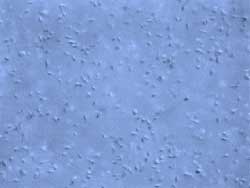Male Factor Infertility
 Male problems may be a factor in 30-40% of infertile couples. The initial screening and evaluation of the male partner will include a history and a semen analysis.
Male problems may be a factor in 30-40% of infertile couples. The initial screening and evaluation of the male partner will include a history and a semen analysis.
Semen Analysis: Patients should abstain from ejaculation for 2-5 days before semen analysis. The complete ejaculate should be collected in a sterile container provided by the laboratory or clinic. The laboratory will then test the sample for count (number and concentration of sperm), motility (movement of the sperm), and morphology (shape of the sperm).
Additional Semen Tests
These optional tests may provide more information about the semen or sperm and can help define specific abnormalities or diseases of the male reproductive system. These tests include:
- Vital staining – determines numbers of living and dead sperm.
- Semen fructose – the absence of fructose, a sugar-like substance in the semen, means either the vas deferens are obstructed or that the seminal vesicles are absent.
- Peroxidase staining – differentiates white blood cells from immature sperm to assess for possible infection.
- Genetic Evaluation: The importance of genetic evaluation in infertile males with severe oligospermia (sperm counts of less than 5 to 10 million per ejaculate) or non-obstructive azoospermia (absence of sperm in semen, not due to blockage) has recently been established. These patients may have abnormalities in the number of chromosomes (karyotype) or abnormalities in the structure of the male chromosome (microdeletion of the Y-chromosome). Patients with azoospermia as a result of being born without two vas deferens frequently have a mutation of a gene responsible for the disease cystic fibrosis but do not have the disease itself.
No semen test can fully predict fertility. Not all of the tests discussed above are appropriate for every couple. The tests performed will depend upon the findings during your evaluation.
Treatment Options
Treatment options for male factor infertility include intrauterine insemination (IUI), intracytoplasmic sperm injection (ICSI) during an in-vitro fertilization (IVF) procedure, and the use of donor sperm in cases where the male partner’s sperm is absent.
Sperm can also be aspirated directly from the testes when there is an obstruction in the vas deferens. This can be an alternative to vasectomy reversal, but requires IVF and ICSI as the amount of sperm obtained is very small.
